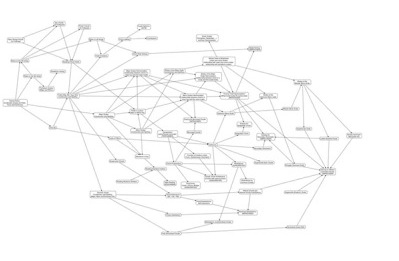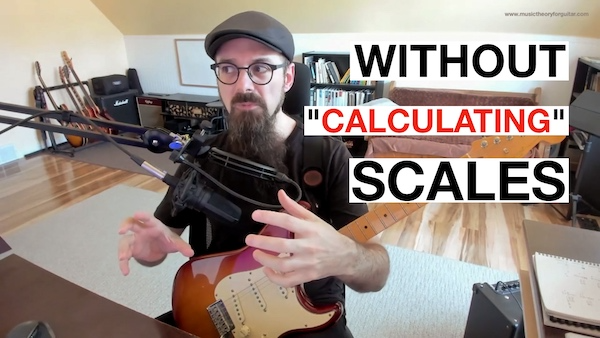The SECRET To Soloing Over COMPLEX Jazz Chords


What should you do if you want to play over complicated jazz chord progressions but you don’t want to spend 20 years learning how?
You might look at chords written in a Jazz progression and think “why is this chord the same as my WiFi password?”...
... Or “Wouldn’t it be faster to just list the notes that aren’t in the chord?”...
... Or “Why is this one telling me to solve for X?”.
And I totally understand the frustration! When you can’t even understand what the chord names are saying, how can you be expected to solo over them?
Well I’m here, like usual, to solve all of your problems. If you feel invalidated by your inability to play over Jazz progressions, all you have to know is one thing. What is that?
The A.
Pentatonic.
Minor.
Stop trying to fit in. Don’t try to ‘learn’ the Jazz language, and just play A minor pentatonic over everything. It’s just when you start confidently playing A minor pentatonic over every single chord progression that you become truly free. This is the path to enlightenment...
... no, I'm joking. Everything I wrote so far is a joke. Sorry :-)
...but still there is a way to sound better when you play complicated Jazz without having to do integral calculus in your mind to know what are the "right" notes.
So if you still really want to sound like a jazz cat when you play, I have a very simple trick you can learn that will let you do it with ease. You'll find it the video linked below. And this time, it's no joke:
If you want to come up with fancy chord progressions of your own, check out my Complete Chord Mastery guitar course to gain a much better understanding of how chords and harmony function on the guitar!
Video Transcription
Hello Internet, so nice to see you. Let's say you are a rock or metal player, okay? But you would like to put into your playing some jazz or fusion sound, okay? So how do you go about that? How would you introduce this kind of foreign style into your playing and still make it sound good to you?
How does jazz? Would work in the mind of a metal player. So right now I'm gonna show you all that because a student asked me exactly that question and I'm gonna show you what to do, okay? And also I'm gonna show you a very dirty trick on how to solo on super complex chord progression.
You will not believe how complex the chord progression are and how easy it is to solo on them and make them sound good. Indeed if you want, just go at the end of this video and see what we're doing, okay?
Because we're gonna improvise together. Me and the students are gonna improvise together and I'm gonna show you step by step. So if you follow us, you can do exactly the same and be as good as him at the end of this video.
Let's go! So I'm looking for some devices to use in like improvised situations that sound more jazzy fusion -like. So like things like whole tone scale, diminished scale or arpeggio. How to use that over minor or major chords?
Very good! Okay, so let me start with the king of all scales or the queen of all scales, depending. The diminished scale, half whole, okay? Not the whole half, half whole, okay? Why? The diminished scale fits potentially everything because it contains a perfect fifth, it contains a minor third and a major third, it also contains a dominant seventh and a sixth, so as long as you don't have a major seventh,
the whole half will fit most of the chord. the diminished fifth, so it fits those diminished chords, okay? I will start this way. What sound do you prefer? Minor seventh, major seventh, dominant seventh?
I mean, what kind of situation do you see yourself in? Let's do minor seventh. Let's skip our A minor seventh just to make it easier, okay? So I will, it will typically not start with the diminished scale, but I will play half -raiser two in either the Dorian scale or the minor pentatonic scale, so just play.
Okay, now take a moment to find a few notes from the A half -hole diminished scale. Those could include the root chord, may not include the root, but you want to find some position in there, okay? In 3 note per string the diminished scale becomes super simple.
You need to write it down and try the 3 notes per string, and you see that there are two patterns. One of them is damn easy, okay? But you got the idea there? Yeah, I think so. Okay, so what I want you to do is this.
Okay, let's play just the diminished scale for a moment, and know it's not the perfect way of doing it, and let's see how it sounds. Two, three, four, so I just move the chord three frets higher, which is still in the same diminished scale, so it's still working, right?
But I could have done another thing, as long as if I use chords that fit in the diminished scale, you can keep playing the scale, and the whole thing will work. That's a trick jazz players use. You know, you're there thinking, how do they follow such a complex chord progression?
They don't. They pick a scale that works on all those chords, okay? And then they write a chord progression, okay? And then they make you believe they're doing something super complex, while all the complexity is here, which is not much, and there, It's just playing the scale, right?
Okay, makes sense That's one way of using it But a better way of using it is I'm an A minor you play something in pentatonic or dorian pentatonic minor or dorian Set them point you just get out of the pentatonic Play a run or something in the diminished scale and then get back into the pentatonic.
So just step out temporarily Okay. Now you spent a A minute and a half. I think playing only the diminished scale So you don't have any rush to come back into the pentatonic. Okay, you know that it can hold for more than a phrase or two Just try to get out play something in the out of pentatonic into the diminution come back into the pentatonic and let's see how it works You It's so fast.
Makes sense. That's pretty much the idea. You like it? Yeah. Yeah, I think an applause is actually it's one at this point. That's one idea. I can diminish with it particularly anything, so just pick the root of the chord, and bam, you can just work on that.
The arc went to scale, it tends to be a bit harder to use, but it will work fantastically well on dominant chord usually. Because you have the root, the ninth, the major third, then you have a diminished fifth, and the seventh.
So the fifths are out, pretty much everything else is in, okay? There's a situation where you have a dominant chord going on and on. So let's do this. Let's play, pick a D seventh chord, and you go up on a D, use a D pentatonic minor, but maybe bend the third, that works, no?
Okay, then now let's figure out the augmented scale, the hexatonic scale, yes. Which is no problem, I just see. Because I'm not playing a fifth right now, I'm playing a root, 3rd, 7th, 9th, so I'm in this scale.
And now, alternators to scales. I'm playing a root, 3rd, 7th, 9t ....
Okay, instant jazz, just add warm water. Okay, actually can be even better than that. Now, like before, we can decide the scale first and the chord progression later. We know that the augmented scale is symmetric because it repeats every two frets.
So as long as if something works, if we stay on the augmented scale, I can move my chord up and down two frets or four frets or six frets. Right, so now just play the augmented scale and don't worry about the chords.
How do you follow the chord progression so well? What are you doing? Oh god, it sounds so complicated. Okay, you'd be surprised. I mean, sometimes it is genuinely difficult to follow the chord progression.
There are some that are genuinely difficult, but sometimes the difficult part is just one of those things. You just don't know that they're doing it. You're not inside the joke, okay? It's actually so it doesn't look like what, but if you write your own song or you're very good at pattern matching but if you write your own song you can put this part into your song and it looks like you guys are doing having an incredibly complex but you aren't or at least well it is complex if you think only of the major scale but just knowing those case you can do that make sense makes sense.
So it's just pattern matching essentially it's just this so you have some ideas yeah I want to hear some song with this stuff now and with your band too tough choice yeah yeah I see this gonna end like a spinal tap jazz with this say a 30 -minute free jazz improvisation. Thank you. Thank you.